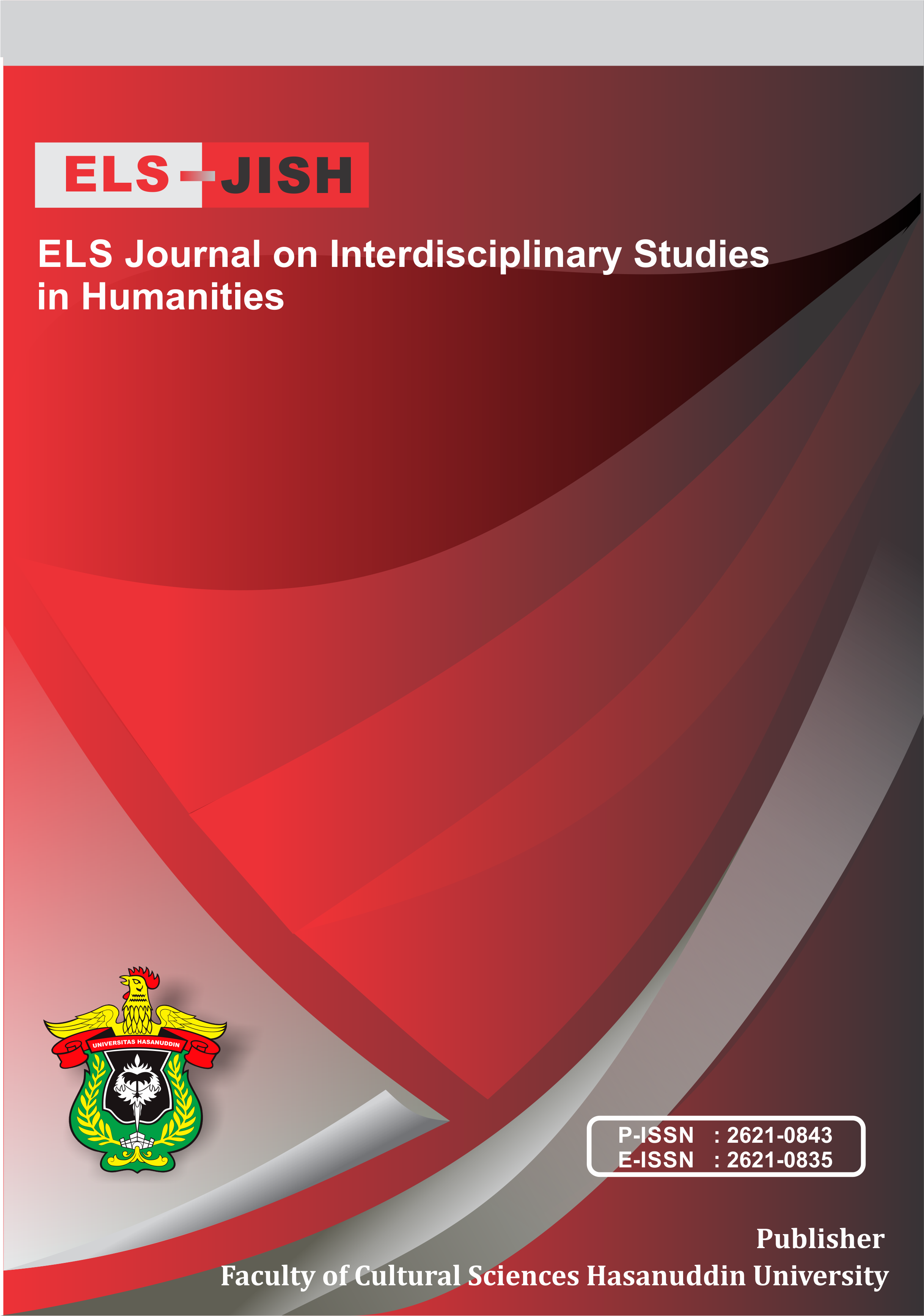Ornaments as a tourist attraction at the King Binamu Tomb Complex in Bontoramba District, Jeneponto Regency
DOI:
https://doi.org/10.34050/elsjish.v3i3.11012Keywords:
Ornament, King Binamu tomb complex, tourist attractionAbstract
The existence of ornament which adorns almost the entire walls of the tomb functions as decorative or symbolic. Ornamen provided information about the life of Raja Binamu when he was still victorious. The analysis is described in a descriptive qualitative manner with an interpretive approach. The discussion is described based on problems related to how the ornament is able to be an attraction of visitors or tourists. The scavenger began by analyzing the ornament in the tomb with Thomas Murno's ornamental composition theory which was developed in Guntur, according to Murno, organizing the composition in art works in this case there were four models of ornaments, namely: composition based on expediency, composition based on representation, composition based on expository, and thematic based composition. It also uses concepts that are based on tourism science strategies. The results obtained in the form of an understanding that the ornaments there contain two understandings, namely ornamentation as a decorative element, namely the presence of thematic repetition ornaments such as parengreng flower motifs. The symbolic ornaments explain the life and activities of kings during his life and have a moral message. Related to its potential as a tourist attraction, the presence of ornaments needs an understanding and image strategy in the form of 1) bringing up ornaments or ornaments in each of the promotional media, 2) providing information about the types of decoration or ornaments in books (booklets) tourist guides and 3 ) creating merchandise taken from ornamental motifs in the Raja Binamu tomb complex
References
Duli, A., & Rosmawati, R. (2018). Late Prehistoric Burial System in South Sulawesi. ELS Journal on Interdisciplinary Studies in Humanities, 1(2), 134-144. https://doi.org/10.34050/els-jish.v1i2.4371
Guntur. (2004). Ornamen Sebuah Pengantar. Surakarta: STSI Surakarta Press.
Hoop. V. D. (1949). Indonesian Ornamenal Design. Batavia, Koninklijk Bataviaasch Genootschap van Kunsten en Wetenschappen.
Miles, M. B. & Huberman, A.M. (1992). Analisis Data Kualitatif. Terj. Tjetjep Rohendi Rohidi. Jakarta: Universitas Indonesia, UI Press.
Pitana, I G. & Gayatri, P.G. (2005). Sosiologi Pariwisata. Yogyakarta: Penerbi Andi.
Rohidi, T.R. (2011). Metodologi Penelitian Seni. Semarang: Cipta Prima Nusantara
Soepratno. (1997). Ornamen Ukir Tradisional Jawa II. Semarang: IKIP Semarang Press.
Suryadana, M. L.& Octavia, V. (2015). Pengantar Pemasaran Pariwisata. Bandung: Alfabeta
Downloads
Published
Issue
Section
License
Copyright (c) 2020 ELS Journal on Interdisciplinary Studies in Humanities

This work is licensed under a Creative Commons Attribution-NonCommercial 4.0 International License.






